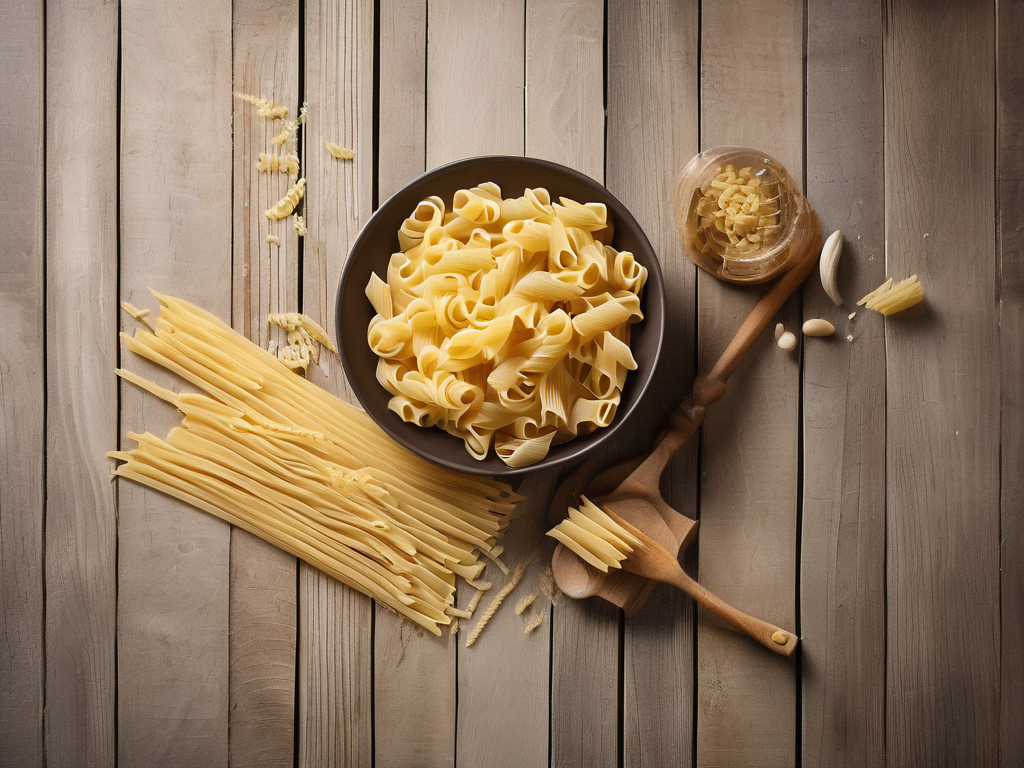
The Best Ways to Store Pasta Dry to Prevent It From Going Bad
Get Your Free Food Safety Cheat Sheet
30 most common foods with instant answers. Print it and stick it on your fridge—completely free!
The Best Ways to Store Pasta Dry to Prevent It From Going Bad
Pasta is a versatile and pantry staple that can be used in a variety of dishes, from simple spaghetti to elaborate lasagnas. However, to ensure your pasta stays fresh and retains its quality, proper storage is crucial. In this blog post, we will discuss the best ways to store dry pasta to prevent it from going bad. (Pasta dry)
Understanding the Shelf Life of Dry Pasta
Dry pasta is a non-perishable food item that can last for a long time if stored correctly. The shelf life of dry pasta can vary depending on the type of pasta and how it is stored. Here are some general guidelines for the shelf life of different types of dry pasta:
- Unopened dry pasta: Can last for 1-2 years past the expiration date if stored properly.
- Opened dry pasta: Should be consumed within 1 year for optimal quality.
- Freshly made dry pasta: Should be consumed within a few days or frozen for longer storage.
Factors That Affect the Shelf Life of Dry Pasta
Several factors can affect the shelf life of dry pasta, including:
1. Moisture
- Exposure to moisture can cause dry pasta to become moldy or develop an off-flavor.
- Store dry pasta in a cool, dry place to prevent moisture absorption.
2. Light
- Exposure to light can cause dry pasta to become discolored and lose its flavor.
- Store pasta in a dark pantry or cupboard to protect it from light exposure.
3. Air
- Oxidation can affect the flavor and texture of dry pasta over time.
- Seal dry pasta in airtight containers to prevent air exposure.
4. Temperature
- Extreme temperatures can impact the quality of dry pasta.
- Store pasta in a cool, consistent temperature environment.
Best Practices for Storing Dry Pasta
To ensure your dry pasta stays fresh and maintains its quality, follow these best practices for storage:
1. Choose the Right Container
- Use airtight containers such as glass jars or plastic containers with tight-fitting lids.
- Avoid storing pasta in its original packaging, as it may not be airtight.
2. Label and Date the Containers
- Label each container with the type of pasta and the date it was stored to keep track of freshness.
- Use a permanent marker or labels to ensure easy identification.
3. Store in a Cool, Dark Place
- Keep dry pasta away from heat sources, sunlight, and moisture.
- A pantry or cupboard away from the stove or sink is an ideal storage location.
4. Avoid Freezer Storage
- While dry pasta can be frozen, it is not necessary and can affect the texture.
- Store pasta at room temperature for the best quality.
5. Check for Signs of Spoilage
- Before cooking dry pasta, inspect it for any signs of mold, off odors, or insect infestation.
- If the pasta appears off, discard it to prevent foodborne illness.
Conclusion
Proper storage is key to maintaining the quality and shelf life of dry pasta. By following the best practices outlined in this blog post, you can ensure that your pasta stays fresh and delicious for longer periods. Remember to keep pasta in airtight containers, store it in a cool, dark place, and check for signs of spoilage before use. With these tips, you can enjoy your favorite pasta dishes with confidence. (Pasta dry)
Authoritative Food Safety References
These agencies and university labs inform every tip and health precaution we publish.
USDA FoodKeeper – Cold Storage Guidelines
Official refrigerator, freezer, and pantry timelines maintained by the U.S. Department of Agriculture.
Visit USDA FoodKeeperFDA Produce Safety Rule & Grower Guidance
Field-to-fridge handling practices that prevent contamination of fruits, vegetables, and leafy greens.
Visit FDA Produce SafetyCDC Foodborne Illness Prevention Hub
Surveillance-backed guidance on pathogens, symptoms, and steps to reduce foodborne illness risk.
Visit CDC Food SafetyUC Davis Postharvest Technology Center
University research detailing optimal storage atmospheres for produce after harvest.
Visit UC Davis PostharvestPenn State Extension – Home Food Preservation & Safety
Peer-reviewed extension bulletins on safe canning, chilling, and reheating practices.
Visit Penn State ExtensionGet Your Free Food Safety Cheat Sheet
30 most common foods with instant answers. Print it and stick it on your fridge—completely free! Want more? Upgrade to the complete guide with 70+ foods.
Scan your food directly and get instant safety info using our AI-powered camera feature.